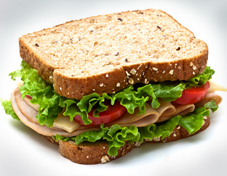Introduction to Banting Diet
The Banting diet, named after William Banting, is a low-carbohydrate, high-fat diet that has gained popularity for its potential health benefits. This diet focuses on reducing the intake of carbohydrates and sugars while increasing the consumption of healthy fats and proteins. The benefits of Banting meals include weight loss, improved metabolic health, and increased energy levels, making it an attractive option for those looking to improve their overall wellbeing.
The principles of the Banting diet are based on the idea that reducing carbohydrate intake can help regulate blood sugar levels and promote fat burning. By focusing on whole, unprocessed foods and avoiding refined sugars and grains, individuals can achieve a balanced and nutritious diet that supports their health goals. Banting meals and platters offer a convenient and delicious way to incorporate these principles into daily life.
Popular Banting Foods

Popular Banting meals include a variety of low-carb vegetables, healthy fats, and high-quality protein sources. Low-carb vegetables such as leafy greens, broccoli, cauliflower, and zucchini are staples of the Banting diet, providing essential nutrients and fibre while keeping carbohydrate intake low. These vegetables can be enjoyed in a variety of ways, from salads and stir-fries to roasted and grilled dishes.
Healthy fats are another important component of the Banting diet. Avocado, nuts, seeds, and olive oil are excellent sources of healthy fats that can be incorporated into Banting meals and platters. These fats not only provide energy but also help keep you feeling full and satisfied. High-quality protein sources, such as grass-fed meats, free-range poultry, and wild-caught fish, are also key to the Banting diet, providing essential amino acids and supporting muscle health.
Creating Banting Platters
Creating Banting savoury platters involves combining a variety of low-carb vegetables, healthy fats, and proteins to create a balanced and satisfying meal. Essential components of a Banting platter might include a selection of grilled meats or fish, a variety of fresh and cooked vegetables, and healthy fat sources such as avocado or nuts. These components can be arranged in an attractive and appetising manner, making it easy to enjoy a nutritious meal.
Balancing flavours and nutrients is important when creating Banting platters. Incorporating a variety of textures and flavours, such as crunchy vegetables, creamy avocado, and savoury meats, can make the platter more enjoyable and satisfying. Additionally, using fresh herbs, spices, and low-carb sauces can add depth and complexity to the flavours, enhancing the overall dining experience.
Tips for Preparing Banting Meals
Preparing Banting meals involves using cooking techniques and recipes that align with the principles of the diet. Cooking methods such as grilling, roasting, and sautéing are ideal for preserving the nutrients and flavours of Banting-friendly foods. Avoiding frying and the use of refined oils can help keep the meals healthy and nutritious.
Meal prep and planning tips can also be helpful for staying on track with the Banting diet. Preparing meals and snacks platters in advance can save time and ensure that you always have Banting-friendly options available. Batch cooking and storing meals in portion-sized containers can make it easy to stick to the diet, even on busy days. By planning your meals and staying organised, you can make the Banting diet a sustainable and enjoyable part of your lifestyle.
Banting-Friendly Ingredients
Key ingredients to include in Banting meals and platters are those that are low in carbohydrates and high in healthy fats and proteins. Leafy greens, cruciferous vegetables, and other low-carb options provide essential nutrients and fibre. Healthy fat sources such as avocado, nuts, and seeds add flavour and satiety, while high-quality proteins such as grass-fed beef, free-range poultry, and wild-caught fish support muscle health and overall wellbeing.
Substitutes for common non-Banting items can help you adapt your favourite recipes to fit the diet. For example, cauliflower rice can be used as a low-carb alternative to traditional rice, while zucchini noodles can replace pasta. Using almond flour or coconut flour in baking can provide a low-carb option for creating delicious and compliant baked goods. By experimenting with these substitutes, you can enjoy a wide range of meals while adhering to the Banting principles.
Customising Banting Platters
Personalising Banting platters allows you to tailor them to your specific tastes and dietary needs. Adding variety and creativity to your platters can keep them interesting and enjoyable. Experimenting with different combinations of vegetables, proteins, and healthy fats can help you discover new favourite dishes and prevent meal fatigue.
Including a mix of cooked and raw ingredients can add texture and interest to your platters. For example, pairing roasted vegetables with fresh salads or combining grilled meats with raw vegetable sticks can create a balanced and satisfying meal. Customising your platters to include your favourite flavours and ingredients can make the Banting diet more enjoyable and sustainable.
Health Benefits of Banting Platters
The health benefits of Banting platters extend beyond weight loss. By focusing on whole, unprocessed foods and reducing carbohydrate intake, individuals can experience improved metabolic health, better blood sugar control, and increased energy levels. These benefits can contribute to overall wellbeing and a higher quality of life.
Weight loss is often a primary goal for those following the Banting diet, and the low-carb, high-fat approach can be effective for promoting fat burning and reducing body weight. Additionally, the diet’s emphasis on healthy fats and proteins can help maintain muscle mass and support overall health. By incorporating Banting platters into your diet, you can enjoy these benefits while also enjoying delicious and satisfying meals.
Dining Out and Banting
Finding Banting-friendly options when dining out can be challenging, but with some tips and strategies, it is possible to maintain the diet while enjoying meals at restaurants. Many restaurants offer low-carb options or are willing to accommodate dietary requests. Looking for dishes that focus on proteins and vegetables and avoiding those that contain high-carb ingredients can help you stay on track.
Communicating dietary needs to waitstaff can also be helpful. Politely explaining your requirements and asking for modifications to dishes can ensure that you receive a meal that aligns with the Banting principles. Many restaurants are happy to accommodate dietary requests, and being clear and specific about your needs can help ensure a positive dining experience.
Success Stories and Inspirations
Examples of successful Banting transformations can provide motivation and inspiration for those following the diet. Hearing about others’ experiences and the positive changes they have experienced can reinforce the benefits of the Banting diet and encourage individuals to stay committed. Success stories often highlight improvements in weight, energy levels, and overall health, demonstrating the potential of the diet to bring about meaningful change.
Motivational tips for staying on track with the Banting diet include setting realistic goals, celebrating progress, and seeking support from others. Joining Banting communities or support groups can provide a sense of connection and accountability, making it easier to adhere to the diet. By focusing on the positive outcomes and staying motivated, individuals can achieve long-term success with the Banting diet.
Common Challenges and Solutions
Overcoming obstacles in the Banting diet is an important part of long-term success. Common challenges might include cravings for high-carb foods, difficulty finding compliant options, and social pressures. Developing strategies to address these challenges, such as finding low-carb alternatives for favourite foods or planning meals in advance, can help individuals stay on track.
Strategies for long-term success include maintaining a flexible and adaptable approach to the diet. Allowing for occasional treats or deviations can prevent feelings of deprivation and make the diet more sustainable. Focusing on the overall pattern of healthy eating rather than perfection can help individuals stay committed to the Banting principles over the long term.
Conclusion
In conclusion, exploring Banting meals and platters involves understanding the principles of the diet, selecting Banting-friendly ingredients, and creating balanced and satisfying meals. By incorporating popular Banting foods, customising platters to personal tastes, and addressing common challenges, individuals can enjoy the health benefits of the Banting diet. Whether preparing meals at home or dining out, the Banting diet offers a sustainable and enjoyable approach to healthy eating. By staying informed, motivated, and adaptable, individuals can achieve long-term success and improve their overall wellbeing.




Leave a Reply